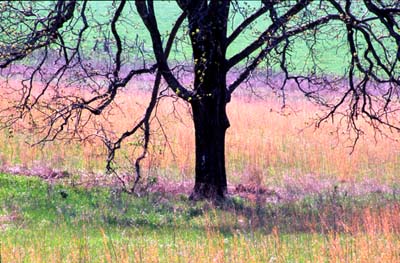| Coming
of Age: Agritourism Growing Strong in America As more and more people feel the accordion squeeze from cramped urban living, increasingly they are looking to the land for diversionary rest and recreation, for breathing room; and to expand their focused lives through a combination of education and entertainment. It’s about the country and open-spaces. It’s about going back to the basics, about enjoying simple pleasures: it’s all about agritourism, sometimes called agritravel. |
 |
||
Whether it is the outdoors, food and fiber, festivals and fairs, or nature-based experiences, this type of travel is becoming a popular choice for people choosing how best to spend their travel dollars. Sometimes referred to as “slow travel,” the focus is on a rural experience, evoking the nostalgia of simpler times, a slower pace, and welcoming places with warm smiling faces. It’s about establishing a connection with the land, the sea; with the flora and fauna of the landscape. It’s about the food chain; it’s about the circle of life. The United States first embraced agritourism as a way to supplement farm and ranch incomes. By marketing the nostalgia of rural America and the ingenuity of the country entrepreneur to the public in unique and innovative ways, many hope that the family land-owner can be sustained. |
|||
 |
|||
For example, festivals that celebrate the crop of the land, fruit of the vine, and the bounty of the sea, abound in every small town. From artichokes, rhubarbs, mushrooms and garlic to vintage wine, artisan cheese, and seafood – these all encompass agritourism. Now, agritourism has blossomed into something more to include commercial enterprise activities such as wine-tastings at vineyards, cattle drives on the range, milking cows at dairies, gathering farm-fresh eggs on family farms, horseback riding at dude ranches, llama-trekking on wilderness preserves, or even touring the likes of shrimp farms or organic food operations. Other forms of agritourism are pumpkin patches, haunted houses, hay and sleigh rides, Christmas tree farms, farm-animal petting zoos, U-pick operations, and farmer’s markets, to name a few. And let’s not forget simple pleasures like camping, picnicking, wildlife watching, garden tours, or even mastering one’s way through horticulture mazes of corn, hedges, and shrubs. Accommodations can range from bed & breakfast operations that offer locally grown food as part of their offered “board” to accommodations such as farms, ranches, youth exchanges and elder hostels. Already a growth industry in Australia, New Zealand, Canada, Great Britain, Italy and other parts of Europe, a TIME Europe Magazine article dated August 16, 2004, says, “Vacationers are increasingly turning to the pastoral pleasures of rural holidays – and Europe’s farmers are reaping the benefits.” The United States is starting to see definable growth in this area as well. For additional information on agritourism, check out the following sites: Karin Leperi is the Agritourism Consultant to The International Ecotourism Society (TIES). The Following Fact Sheet is courtesy of The International Ecotourism Society Tourism: “Travel undertaken for pleasure” Size:
Growth:
Importance to developing countries:
Since surveys rarely ask either travelers
or businesses specifically about ecotourism, precise statistics are
difficult to determine. Ecotourism is frequently lumped ecotourism
together with nature tourism and other forms of ‘experiential’
or ‘alternative’ tourism. These figures represent TIES
best effort to put together an accurate assessment of the strength
of ecotourism, particularly since 2000.
Consumer Demand: Strong, growing but largely passive
Seeking out—and paying for—responsible tourism
Ecotourism vs Mass Tourism:
Ecotourist Profile: In the U.S. the primary target market is:
In Europe the primary target market is:
|
|||